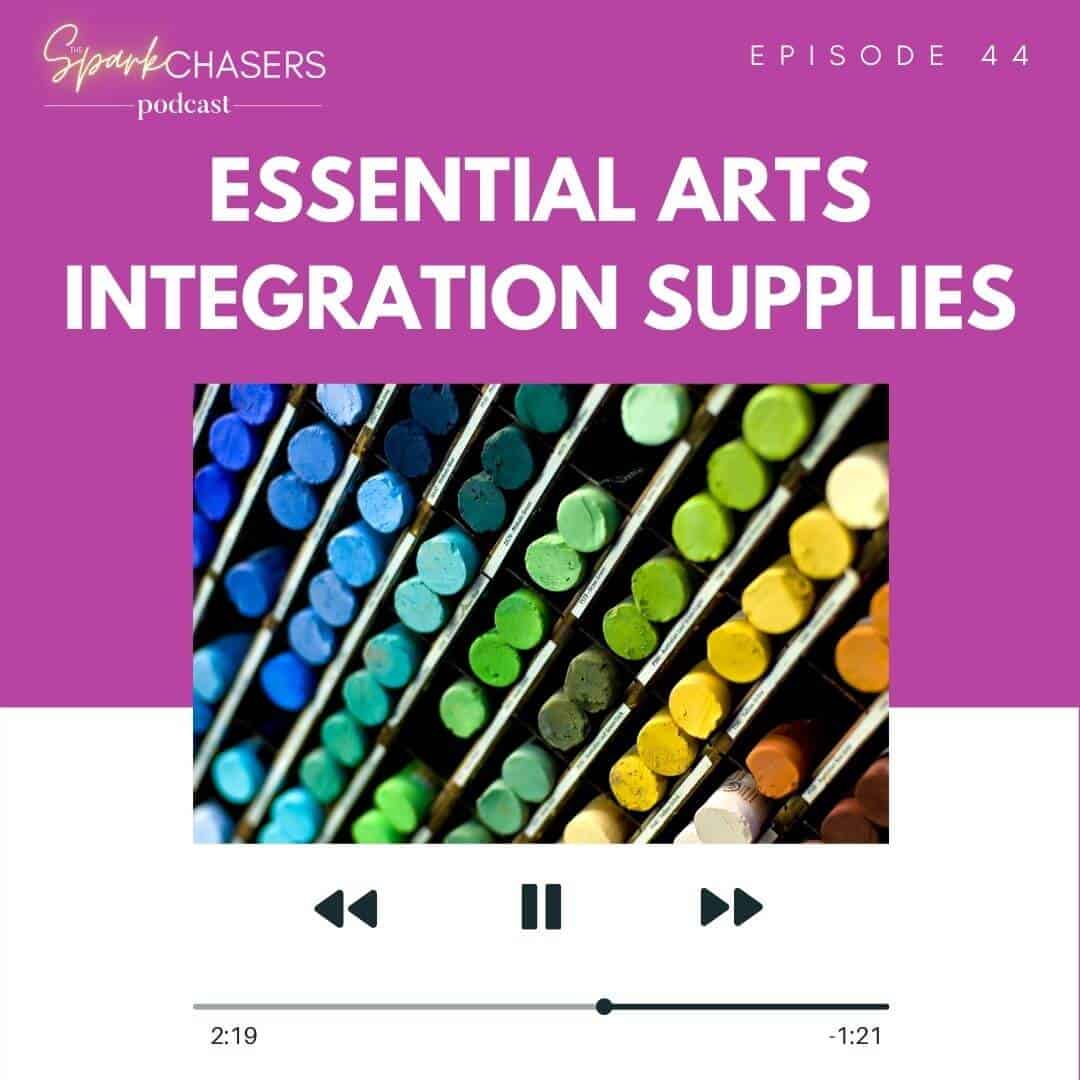Sparkchasers Episode 7 | Show Notes
Creative Strategy: Using Throughlines in your Classroom
SUBSCRIBE ON:
You know, there’s a secret that writers use to instantly make their writing more engaging for the viewer or the reader. It’s called a Throughline. Essentially, a throughline is a connecting theme, plot, or characteristic. Today, I want to show you how to use Throughlines in your teaching to make it pop and help students deepen their learning. Let’s go!
The Basics of Throughlines
Fun story – when I was digging into the research for this podcast, I got stuck on the name. The first one that popped into my head was “Throughlines” because it’s a perfect representation of what we do as educators in all areas of our lives. You can’t just use creative approaches in your classroom and expect to not have it influence what you choose to do in your spare time. Everything is connected.
So I originally thought that would be a great way to pull together all of the things we talk about on this show. But then I found out that NPR had beat me to the punch. So back to the drawing board I went! Thankfully, it all worked out for the best. I love Sparkchasers and NPR’s Throughlines podcast is something I love listening to (and highly recommend).
Key Ideas:
- A Throughline is a theme, plot, or characteristic that connects stories together.
- Authors use Throughlines for stories that have a lot of elements going on.
- Throughlines help the viewer or reader do a few things: understand the theme/character better over time, layer experiences, make predictions, and become invested in the story.
- Throughlines help the author do a few things, too: chunk out a story so as to not overwhelm the viewer/reader, get deeper with a theme/character, make their content super engaging. Throughlines are directly connected to open loops. Open loops allow you to hook a viewer/reader and gives you a reason to circle back.
How to Use Throughlines in Your Classroom
Obviously, you could use this as a writing technique. You can help students use throughlines to expand their own writing and storytelling. But what’s more interesting is to look at throughlines for both lesson planning and as a creative technique to pull in various art forms.
Key Ideas:
- For lesson planning, use your yearly scope and sequence to find when you’re circling back to specific topics to add or expand on them throughout the year. This is the point of a spiral curriculum model. Once you know when each of these topics/themes/ideas occurs, you can design a throughline concept. For example, if you know you’ll be looking at place value multiple times throughout the year, explore the idea of a digit value throughline because Place value refers to the value of each digit in a number. Try to create a place value story that you can add onto throughout the year.
- For Pulling in Various Artforms: Look for overarching themes in your curriculum and use them as artistic throughlines. For example, try looking at elements like form, rhythm, or color. These cross artform boundaries, and also connect with other content areas very easily.
- When you have a specific throughline, it provides a homebase you can keep coming back to throughout the year. Use those open loops!
Expanding Student Autonomy with Throughlines
The last idea I want to explore with you today is how to use Throughlines as a way to invite more student autonomy.
Key ideas:
- Student autonomy instantly provides more ownership in the learning process. When students own their learning, they are more willing to engage and stay focused.
- Ask students to create their own Throughlines they’d like to explore this year. See how those Throughlines already weave into the curriculum you have to cover and then add them in as you can.
- Select a few Throughlines on a specific unit you’re working on and have students get into small groups to select one of the Throughlines available. Students can then learn the content of the unit through the lens of their specific Throughline.
Hopefully, this creative concept is something you’ll be able to weave into your instruction. Or at the very least, this Throughline idea has sparked a new way to think about your curriculum this year.
Now it’s your turn: I’d love to hear your thoughts and questions about this topic. Remember that there’s a question box below where you can ask anything. Just head over to artsintegration.com/sparkchasers and you’ll find today’s show notes, contact area, and links for more resources. And if you are enjoying the show and know someone who could benefit from our discussions, please share the podcast with them. Together, we can chase the spark of our ideas and make a brighter future for everyone.
Additional Resources:
Throughlines and how to Use Them
TED Talk Masters Teach You How to Tell a Story that Actually Means Something
Have a Question?
Do you have a question about today’s episode or need help with something? Let me know using the button below and I’ll make sure to chat about it on an upcoming episode.






